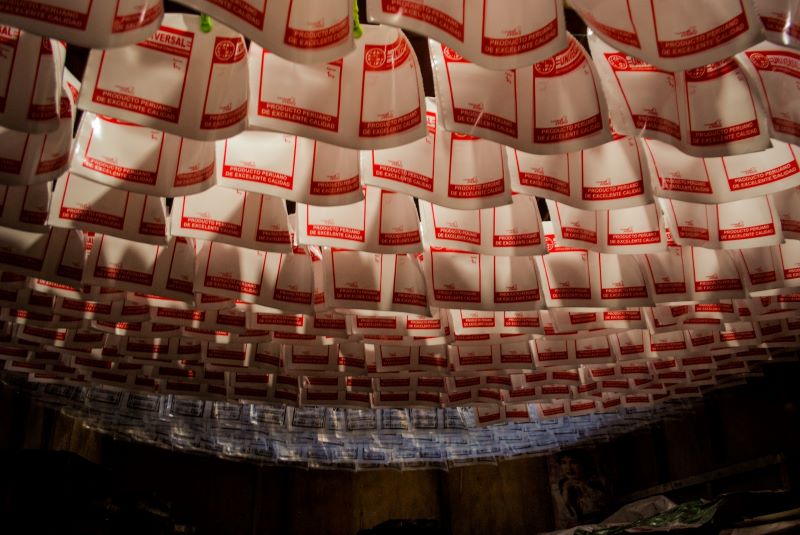
Your initial plans for a clothing company probably weren’t too specific about what you were shipping your products in. This statement is even more true if you started with merch fulfillment services from day one. However, with the push to be greener and earth-friendly and the rise in shipping costs, you may be reconsidering your packaging for the first time. If your fulfillment service gives you an option, polyethylene packaging may be the best choice for your business.
What Is Polyethylene Packaging?
Polyethylene is a polymer derived from crude oil or natural gas. You may hear it called PE. It’s a highly versatile thermoplastic material that you will find in construction, vehicles, and packaging. High-density PE is stiff and used for containers, pipes, and bottles. Low-density PE is more flexible and is what you will find in shopping bags and wrapping films. Review the benefits of polyethylene below.
Why Polyethylene Is The Way To Go
Polyethylene is among the most common packaging materials available on the market. Its popularity stems from the following five benefits:
1. Durable
When shipping your products, you want to protect them during transit. Shirts can be very delicate, tearing if the packaging catches or rips. While you could easily replace a standard shirt off the rack due to shipping damage, it’s a little harder to replace custom t-shirt screen printing orders quickly, for example. Polyethylene is known for its strength, withstanding the wear and tear of whatever shipping company you use. Your apparel will arrive in excellent condition regardless of destination, improving customer satisfaction and reducing replacement costs.
2. Low Weight
When you have an apparel company, you need to keep your shipping costs down for both you and your customers. You don’t want to pay extra for your packaging. Low-density PE packaging is exceptionally lightweight, making shipping and handling much more manageable, saving you money on shipping expenses.
3. Moisture-Resistant
When you trust someone else to ship your merchandise to your customers for you, you want to ensure it arrives in the high-quality state you would expect. Polyethylene is moisture-resistant and doesn’t allow water vapor to pass through, so it’s the packaging choice for electronics companies. Because of this, it’s perfect for shipping water-susceptible materials like t-shirts, especially to areas with high humidity or rainy climates. It will protect your items from any liquids throughout transit.
4. Highly Adaptable
Polyethylene is highly versatile. You can customize it to fit various products and styles easily. Because of its properties, you can heat-seal it; You can wrap it around whatever you need and then secure it with an airtight seal. The same package will hold one t-shirt or five and will fit different sizes without issue.
5. Cost-Effective
When comparing the costs of shipping materials, it’s tough to beat PE. Beyond being one of the most affordable packaging choices, it will save you money on shipping costs and protect your products throughout the shipping process. Its ability to fit various package sizes without needing different-sized materials increases its affordability.
Potential Drawbacks To Consider
While polyethylene packaging has many benefits, there are a few potential downsides. The most significant is its environmental impact. If the factories producing the packaging aren’t careful, it can contaminate groundwater and pose health risks to surrounding communities. They also contribute to greenhouse gases in the atmosphere.
Because it’s derived from crude oil, there’s a finite supply. While PE is reusable, it is challenging to recycle. If not disposed of properly, it can harm wildlife that mistakes it for food or bedding. Under optimum conditions, it can still take a few years to decompose, so it’s not considered biodegradable. However, it generates significantly less solid waste than paper packaging.
Unfortunately, there is no perfect packaging solution yet. While there are many advances, there’s always a trade-off. You may be able to find a more eco-friendly wrap; however, it may be heavier, more costly, and not fully protect your t-shirts. While consumers are happy to hear about their products being green, they aren’t thrilled when their new item arrives soaking wet with packaging stuck to it in pieces since it’s almost too biodegradable. You can reduce your packaging but must still protect and ship your items.
What’s Your Brand’s Goal?
In the end, it comes down to your brand and where your priorities lie. Polyethylene has many advantages and a few downsides you need to consider when choosing a shipping material for your label. If you’ve built an eco-conscious brand, PE packaging may not be for you. However, if you are looking for inexpensive and effective packaging to get your products safely to your customers, then polyethylene is the ticket. Proper disposal and reuse, when possible, go a long way to minimize any environmental impacts you may be concerned about.
Robert Fisher is the founder and CEO of Thrive Screen Printing and brings extensive experience in the screen printing and fulfillment industry.

